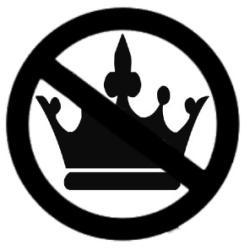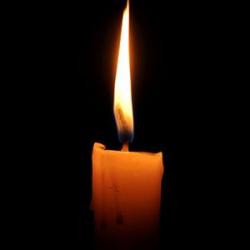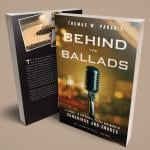“North and South?” the people of Lineland said to our hero. “That’s nonsense. There’s no such thing as North and South, only East and West.”
Our hero is the main character in Edwin A. Abbot’s Flatland. He is a square — a literal square, a four-sided, geometric figure in the two-dimensional world of Abbot’s transcendently weird mathematical parable. And there I was, telling this story again because an honest question deserves the most honest answer we can give, particularly when the people asking it are in pain.
The girls spent last Tuesday getting the house ready for PopPop, who was coming home for hospice care. We talked about what that meant and I relayed, as gently and frankly as possible, what the doctors had told us. A few days. Maybe more, maybe less. But we would make them good days.
And so we cleaned and rearranged furniture and got things ready. We set up Pop’s bed in the family room, where he’d be able to look out the sliding doors to see the back yard and where there would be room enough for all the visitors we expected to come that night and the next few days. The girls arranged pictures around the room and flowers from the garden. They did a great job. It was lovely.
But Pop didn’t make it home. At some point during the ambulance ride home he fell asleep and then he died.
So the past week has been full of questions. PopPop was with Grandma now, the girls were told, and they’re both looking down, free of pain and disability and dialysis, watching your swimming and softball, happier than ever in heavenly bliss.
Really? The girls, to their credit, are skeptical. What do these people mean when they say Pop is with Grandma? And do I really think he somehow saw the bed and the pictures and flowers, that he somehow knows how lovely the room was? Where is he now? What happened to him? In that sleep, what dreams may come?
These are questions I can’t answer. None of us can. And so I tell what truth I have.
“I don’t know.”
Not good enough, of course, for them or for me. And so the children demand to know what I think — what I believe or guess or hope. And not just the children.
Here I can do only slightly better. “Eye hath not seen, nor ear heard,” St. Paul wrote in response to just these questions, and God help me the best story I know about such unseeable and unhearable things is Flatland.
So one day our hero, the square, comes across the kingdom of Lineland, which is just what it sounds like — a straight line where all the people are just dots, little points on an East-West axis. To them the square looks like another dot, because that’s all they can see of where he intersects their world.The square tries to explain to them that he’s more than that, that he’s a two-dimensional shape consisting of lines that go North and South as well as East and West, but this just blows their little Linelander minds.
“North and South?” the people of Lineland said to our hero. “That’s nonsense. There’s no such thing as North and South, only East and West.”
Try as he might, he couldn’t get them to understand.
A few days later, the square meets another Flatlander, a circle who can do an amazing trick — growing bigger and shrinking smaller. The circle explains to our hero that he isn’t actually changing size, but that he’s really a sphere — a three-dimensional globe who only appears to change size to the square because he is rising Up and Down above and below Flatland itself.
“Up and Down?” says our hero. “That’s nonsense. There’s no such thing as Up and Down, only North, South, East and West.”
His little Flatlander brain can’t conceive of a sphere or comprehend what this sphere is trying to tell him. And so the sphere does something extraordinary — it lifts our hero Up, taking him above and out of Flatland to behold the incomprehensible. The square is caught up to the third heaven, into the unknown and unknowable realm of Up and Down from which he can see all of Flatland laid out below. There he can see inside the houses, see through and into the Flatlanders themselves. This epiphany overwhelms him.
“I understand,” he cries. “Three dimensions! Now let’s keep going — further up and further in! Let’s go beyond your world too, to see the fourth and fifth and sixth dimensions!”
“Four dimensions?” the sphere says. “That’s nonsense. There’s no such thing, only Up, Down, North, South, East and West.”
And he dumps the poor square back in Flatland, convinced the fellow has gone mad.
And but so anyway, I told them, that is what I think happened to Pop. That is what I think will happen to us all. One day you and I will be out of time and we cannot conceive or comprehend what that means any more than the poor Linelanders can understand North and South or the poor Flatlanders can understand Up and Down.
And so there I was, awkwardly trying to convey why I find this reassuring, why I find “We can’t know” so much more pregnant with hope than “We don’t know,” when I suddenly realized that I hadn’t yet named the reason or the source for that hopefulness, and that trying to do so might sound like nothing more than one more hollow, funeral-week platitude.
Flatland is a fine little parable as far as it goes, an invaluable illustration of geometry and physics and of finite creatures’ inability to grasp the infinities that surround them, but it has little to say about love. And while there is much that we do not and cannot know, if you want to know what I think or guess or believe or hope, it is this: The universe is governed by love.
“Love?” the tesseract says. “That’s nonsense. There’s no such thing as love, only …”
– – – – – – – – – – – –
P.S. Thank you, everyone, for your kind words and condolences. After a long week, I’m looking forward to getting back to regular, irregular posting here.












